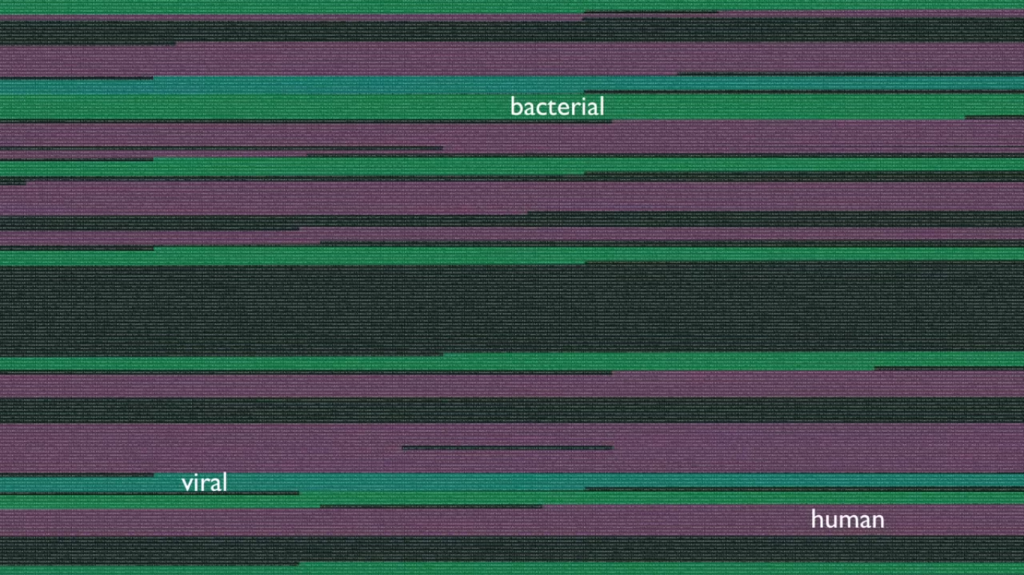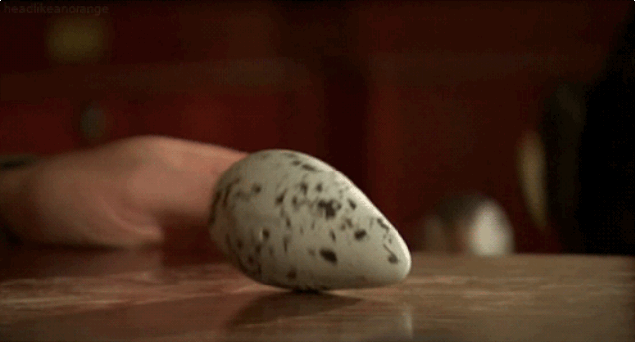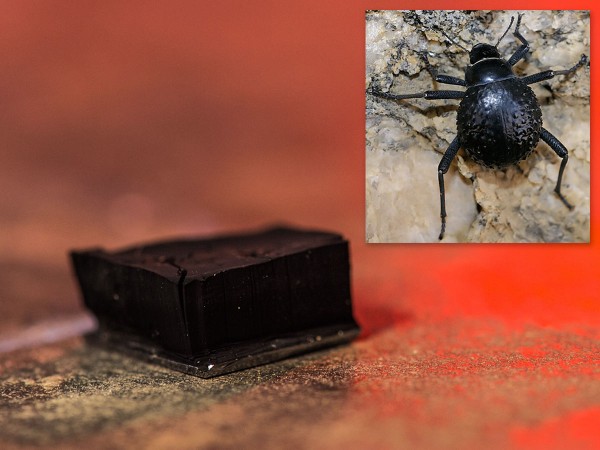Now I do not exactly remember where and how I started my journey down this rabbit hole. But the deeper I went the more interesting it became. It was a great learning experience. I’m clearly not an expert. Here I share the understanding I developed of the spider eye over the few hours of exploration. For this I referred to various sources all of which are mentioned in the links. And if you know more or would like to add something interesting to the article please let me know in the comments below.
The first thing about spider eyes is that 99% of spiders have 8 eyes. A little less than 1% of them have 6 eyes. In some fringe species there are 4, 2 or no eyes at all. Apparently, based on the pattern these eyes are arranged in, on their cephalothorax (let us mortals call it the ‘head’ to make things simple), the family to which the spider belongs can be determined. Some blessed human, made the following schematic to help us do exactly that. In case you ever feel the need to do so, here it is:

And in much greater detail, right here.
For their small size and the limited number of photocells, spider eyes, especially the jumping spider’s (Salticids) eyes perform surprisingly well. Their resolution is better compared with larger mammals than with insects. In the human world a camera of such standards this would simply be an engineering miracle. You will understand why I say that soon…
In the image above if you locate the family Salticidae, you will see those two large eye in the front which are particularly very interesting. These are called the principal eyes (or anterior median eyes) and are the ones that allow high resolution vision. So much that the spider would be able to resolve two spots on a screen 20 cm away from the spider, sitting just 0.12 mm apart from each other. An acuity of about ten times that of a dragonfly – 0.04°.
The brain of this spider, show in blue in the image below is pretty big for its size. The proportion of the volume of brain to body is more or less similar to that of human beings. The brain of Salticids also have a rather large region dedicated for visual processing.
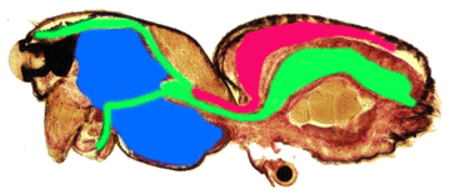
The principal eyes we are talking about are in the shape of elongated tubes as seen below, in the front of which is a hard lens and at the other end is a layer of photocells. Inside the tube, near the retina is another little lens which moves back and forth along the tube like a telephoto lens system. These elongated tubes are like the tubes of a binocular which allow for a higher resolution using a small package.
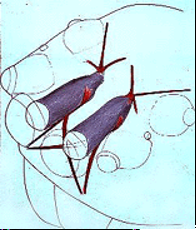
However the downside of such a tube like architecture is that it limits the field of vision. Here’s how that problem is dealt with.
The front part, with the big corneal lens is fixed. It has a long fixed focal length. The farther end where the retina is located, is connected to these muscles shown in red. These muscles allow for the tube’s farther end to move around in several degrees of freedom to make quick movements and scan a larger image in its head, one small field of view at a time.
In the video below you can see the retinal end of the black tubes moving around inside the translucent exoskeleton of the spider as the spider forms a high resolution complete image of its surroundings, one small field of view at a time.
If you peer deep into their eyes you will see a dark (black) when you are looking into the small retina. However when the farther end of the tube moves, you see a honey brown color with spots. This is the inner wall of the tube that you are seeing in the following video.
Then the retina itself is another biological marvel. Unlike our single layered retina, the Salticid’s retina is made up of four layers. The four layers are arranged one behind the other. This lets the nature pack more photocells in a smaller area and also helps the spider see in color as different colors (different wavelengths) with different refractive indices are focused in different planes.
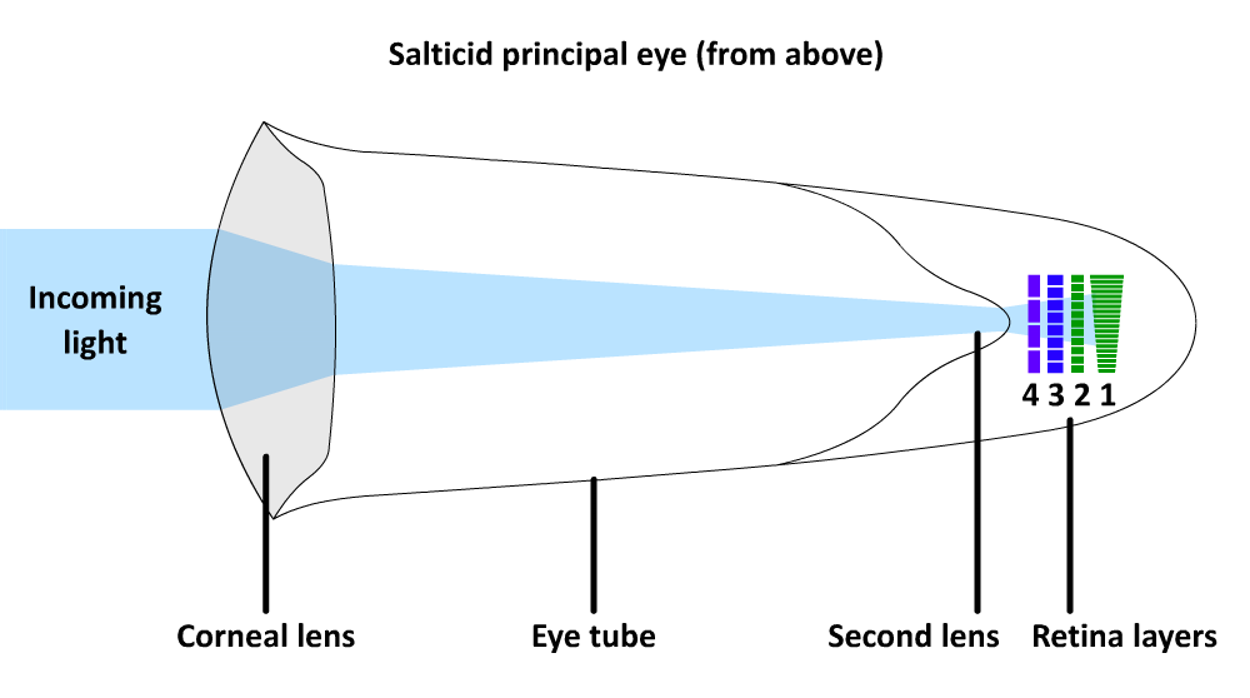
Counting from the rear end, the spider uses different layers of retina to obtain different colors of the image. The retina’s layer 1 and 2 to get the green color (~580 nm – 520 nm wavelengths), blue color using the layer 3 (~480 – 500 nm wavelengths) and layer 4 for ultraviolet (~360 nm).
An important detail in the above image reveals how spiders manage to keep focus on different objects at different depths, in focus. The layer one has photocells arranged in a step fashion, with varying distance from the lens which makes sure that all objects are focused on at least one part of the layer 1.
The other problem of distance estimation which matters a lot for jumping spiders is again solved rather elegantly by the same apparatus. Humans use their stereo vision – two eyes which are far apart to estimate distance. Other animals move heads to do the same but I’m not getting into that.
Jumping spiders employ a completely different algorithm, utilizing degree of blur cues. For which the second layer plays a crucial role. The second layer would have received a sharp blue image, but they are not sensitive to blue light like I mentioned above. The green they detect is rather blurred at that plane. It turns out that the amount of blur depends on the distance of the object and helps the spider determine the depth by processing the amount of blur in the image. Hence allowing it to jump and hunt accurately.
If you are a university student with free access to journals, I think a quick look at the paper titled: “‘Eight-legged cats’ and how they see – a review of recent research on jumping spiders,” will help you delve into greater detail.
Psst: Someone has it uploaded on research gate for free access for I don’t know how long: here.
Please leave a comment below to let me know your thoughts on this, or if you have any ideas for future posts. I plan to reward the top commentators every month so do not forget to say something.

